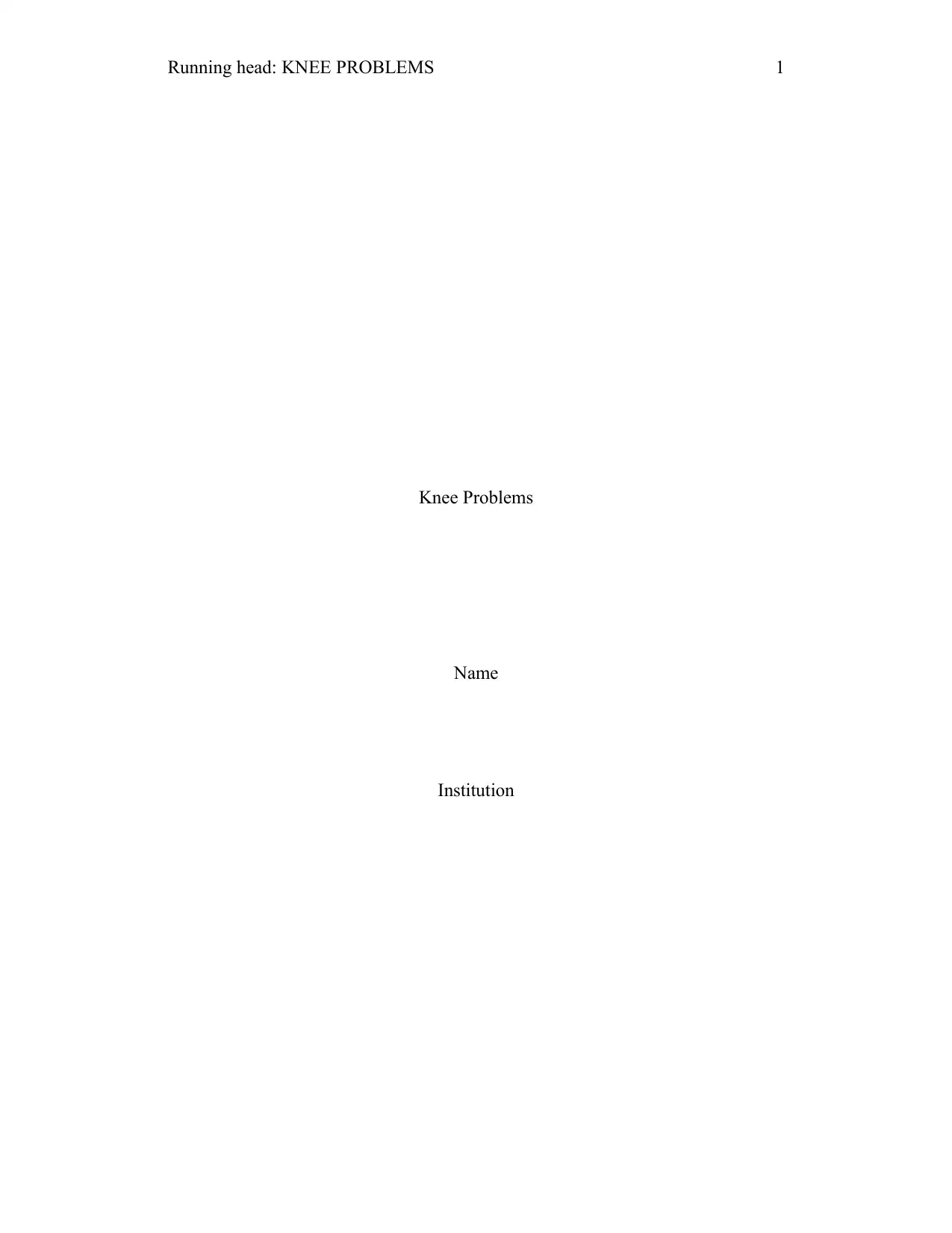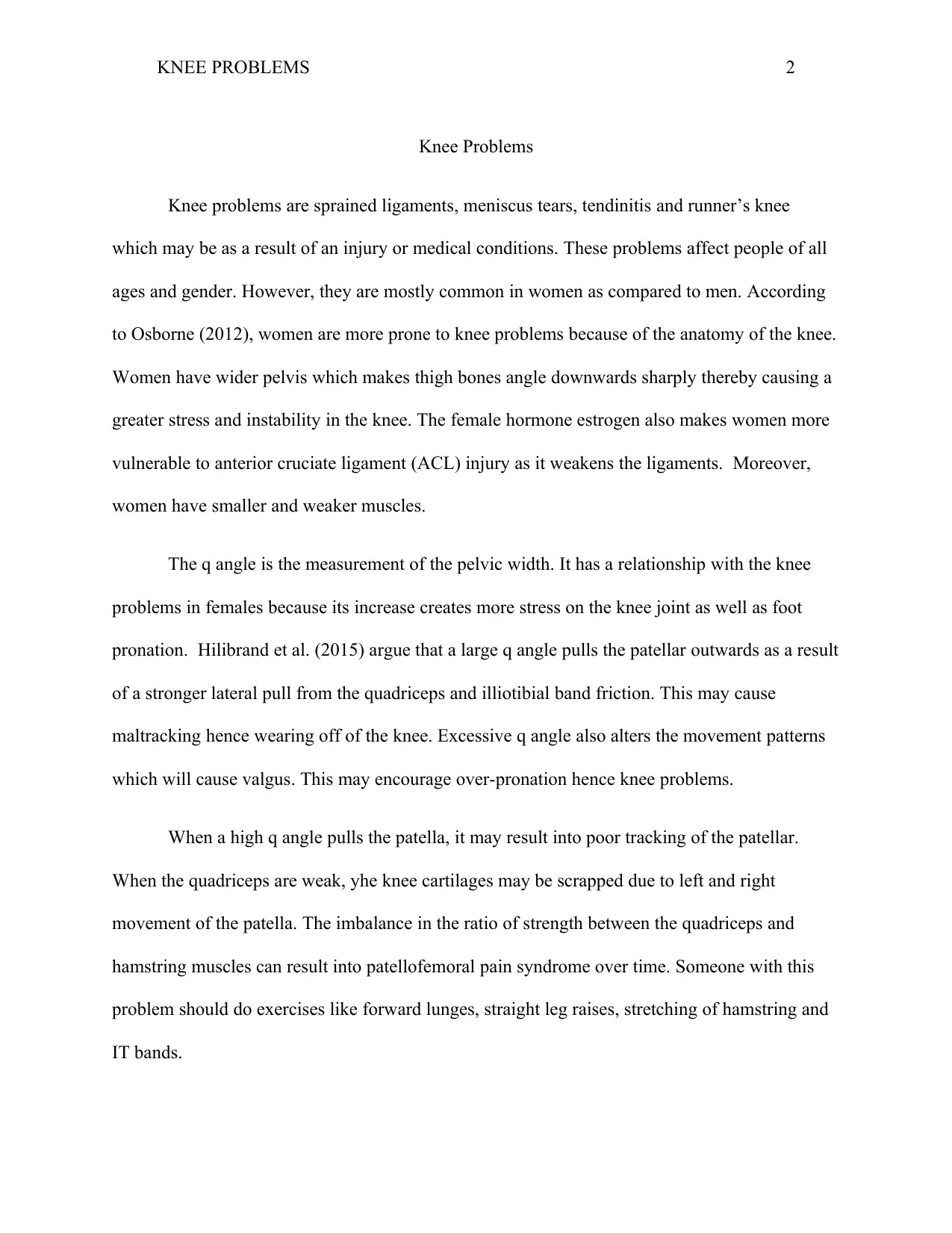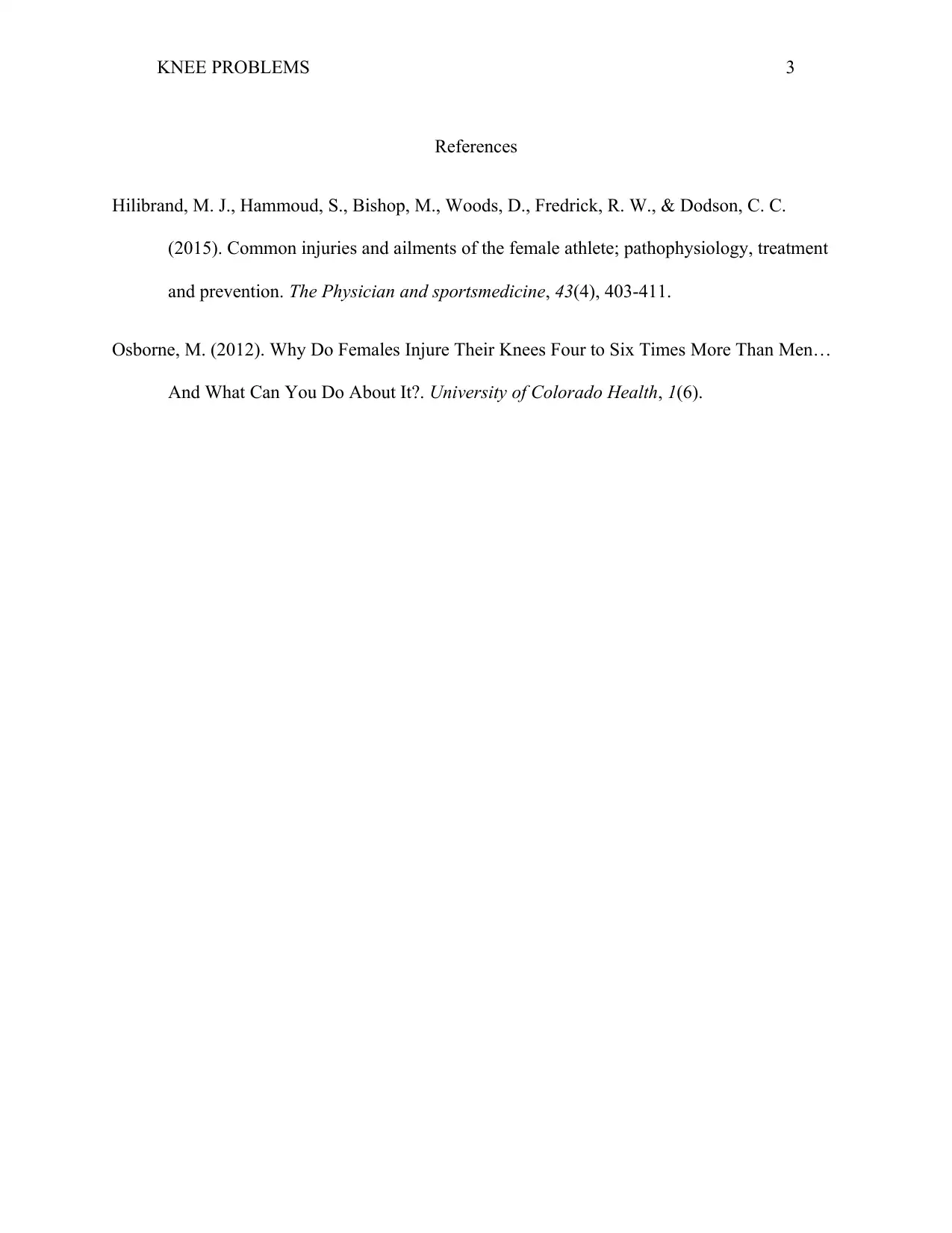Knee Problems: Causes, Symptoms, Treatment, and Prevention for Women
VerifiedAdded on 2022/10/11
|3
|427
|13
Report
AI Summary
This report examines knee problems, particularly focusing on their prevalence and impact on women. It discusses the anatomy of the knee and how factors such as a wider pelvis and the female hormone estrogen contribute to increased vulnerability. The report highlights the role of the Q angle in knee problems, explaining how it influences the stress on the knee joint and can lead to conditions like patellofemoral pain syndrome. It also mentions the importance of exercises like forward lunges and hamstring stretches for managing these problems. The report references research by Hilibrand et al. (2015) and Osborne (2012) to support its claims. This report provides an overview of knee problems, focusing on the causes, symptoms, and potential treatment options, along with the exercises to reduce the risk of knee problems.
1 out of 3





![[object Object]](/_next/static/media/star-bottom.7253800d.svg)